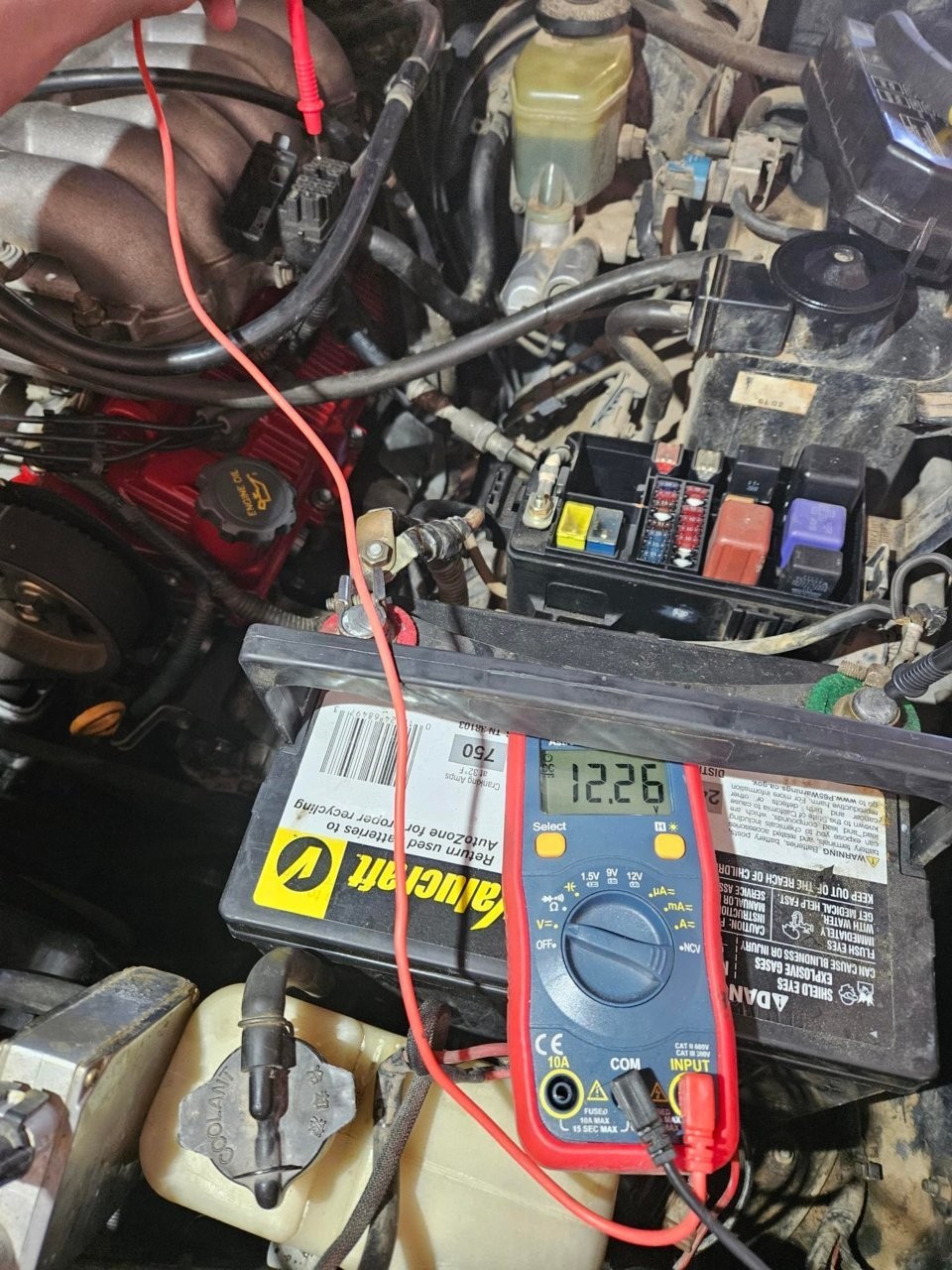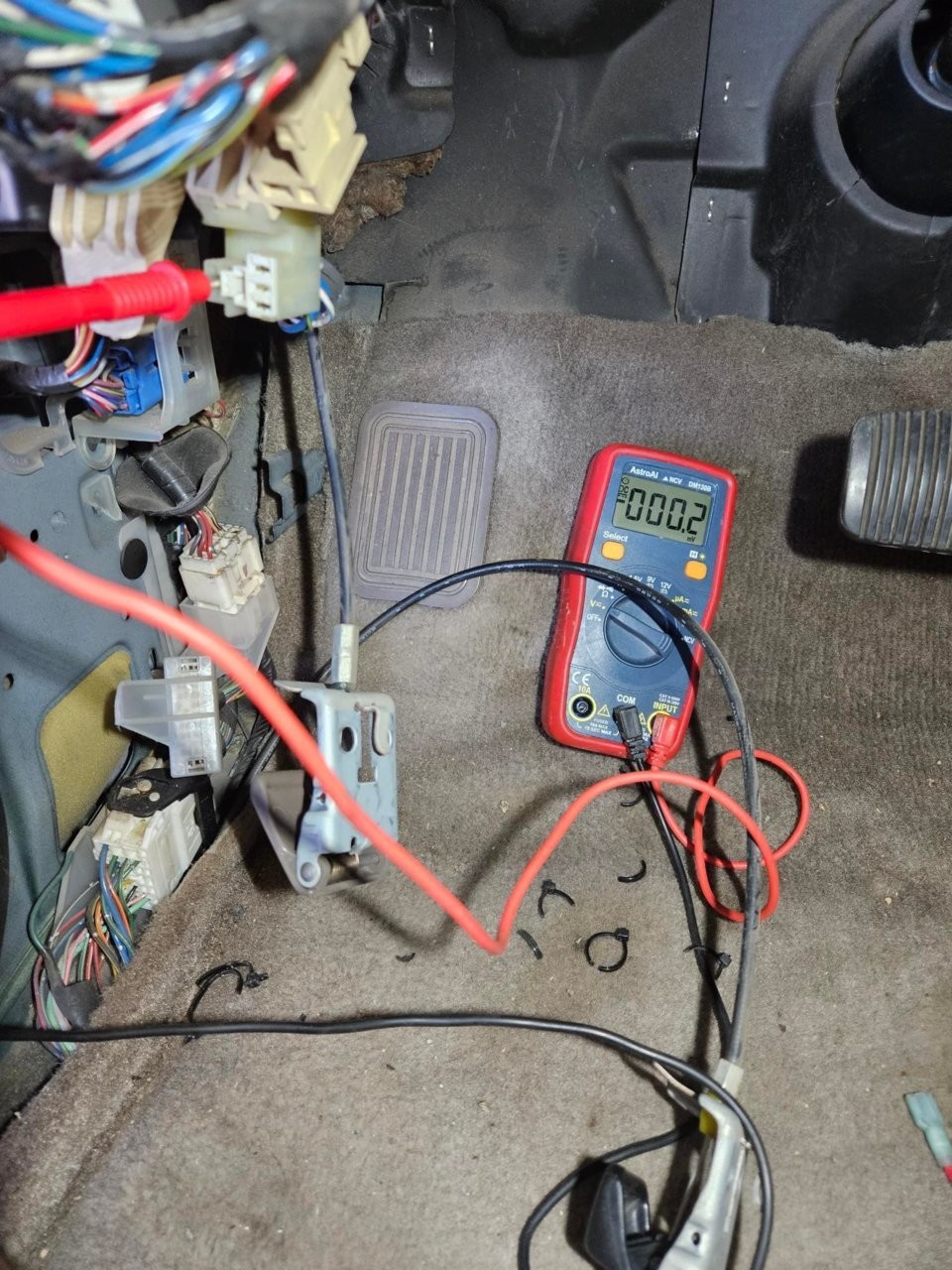Experiencing a no-start issue in your 1998 Toyota Camry can be frustrating, especially when you try to use your OBD2 scanner to diagnose the problem and find that the port isn’t communicating. This scenario, where the OBD2 port fails to send out data, is more common than you might think in older vehicles like the ’98 Camry, and it can significantly complicate pinpointing the root cause of your car trouble. Let’s explore some potential reasons why your 98 Camry’s OBD2 port might be unresponsive and how this relates to a no-start condition.
One of the first things to consider when facing an unresponsive OBD2 port is the power supply to the port itself. Like any electrical component, the OBD2 port needs power to function. Pin 16 of the OBD2 port is designated for battery voltage. If this pin isn’t receiving power, the scanner won’t be able to establish a connection. A simple check with a multimeter can confirm whether the port is getting the necessary 12V.
 Testing for 12V power at the +B terminal of a 1998 Camry's diagnostic port as part of troubleshooting a no-start issue.
Testing for 12V power at the +B terminal of a 1998 Camry's diagnostic port as part of troubleshooting a no-start issue.
Often, a blown fuse is the culprit behind a dead OBD2 port. Consult your Camry’s fuse box diagram – usually located on the fuse box cover or in your owner’s manual – to identify the fuse responsible for the OBD2 port or the cigarette lighter, as they sometimes share the same circuit. A visual inspection or a continuity test with a multimeter will quickly tell you if the fuse is blown and needs replacement.
Beyond power, the communication lines themselves could be the issue. The OBD2 port relies on a network of wires to transmit data between the car’s computer (ECU) and the diagnostic scanner. Damage to these wires, such as shorts, breaks, or corrosion, can disrupt communication. While tracing wires can be more involved, checking for obvious signs of damage is a good starting point.
In some cases, the problem might not be the OBD2 port itself, but rather an issue that prevents the ECU from providing data. For instance, if the ECU isn’t receiving the correct signals from crucial sensors, it might not be able to process or output diagnostic information. Sensor problems can also directly contribute to a no-start condition.
Consider the fuel system as a potential area of concern, especially if your Camry is cranking but not starting. A lack of fuel delivery can certainly cause a no-start. While you might be tempted to immediately jump to the fuel pump, it’s essential to systematically check the entire fuel circuit. This includes verifying that the fuel pump is receiving power when the engine is cranking.
 Checking for voltage at the fuel pump connector (blue-orange wire) in a 1998 Camry, a crucial step in diagnosing fuel delivery problems.
Checking for voltage at the fuel pump connector (blue-orange wire) in a 1998 Camry, a crucial step in diagnosing fuel delivery problems.
Similarly, the Circuit Opening Relay (COR) plays a vital role in powering the fuel pump in many Toyota models. If the COR is faulty or not receiving the correct signals, the fuel pump won’t run. Testing for voltage at the COR during cranking can help determine if this relay is functioning correctly and sending power to the fuel pump.
 Verifying voltage at the Circuit Opening Relay (COR) blue-orange wire while cranking a 1998 Camry to pinpoint electrical issues affecting the fuel system.
Verifying voltage at the Circuit Opening Relay (COR) blue-orange wire while cranking a 1998 Camry to pinpoint electrical issues affecting the fuel system.
It’s also worth noting that some older vehicles, particularly those from the mid-1990s, might have diagnostic ports that are not fully OBD2 compliant in the way modern scanners expect. While a 1998 Camry should be OBD2 compliant, variations or early implementations might sometimes lead to communication issues with certain scanners. However, this is less likely to be the primary cause if the port is entirely unresponsive.
In conclusion, troubleshooting a 1998 Camry with a no-start issue and an unresponsive OBD2 port requires a methodical approach. Start by verifying power to the OBD2 port and checking relevant fuses. Investigate potential issues with the wiring and consider the possibility of sensor or ECU related problems. Don’t overlook the fuel system, and systematically test components like the fuel pump and COR. By addressing these areas step-by-step, you can increase your chances of diagnosing the no-start issue, even when your OBD2 port isn’t providing the diagnostic data you expect.